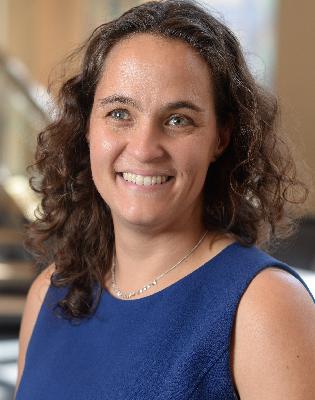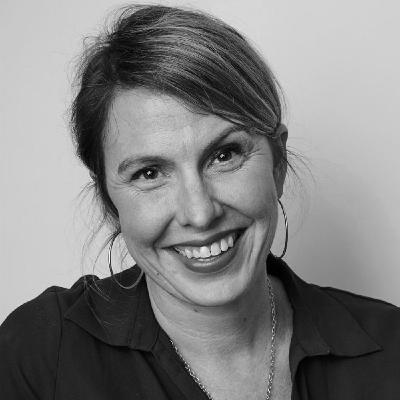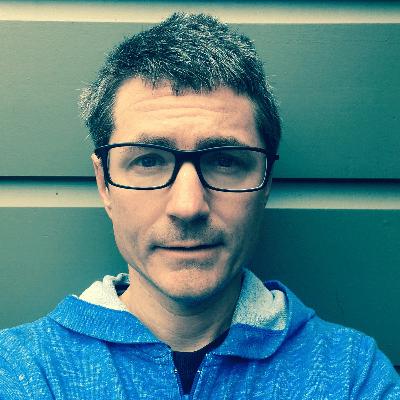55: The Maker Mindset Connecting Product, Design, and Engineering (ft. Todd Wilkens)
Description
Transcript
Jesse: I’m Jesse James Garrett,
Peter: and I’m Peter Merholz.
Jesse: And we’re finding our way,
Peter: Navigating the opportunities
Jesse: and challenges
Peter: of design and design leadership,
Jesse: Welcome to the next phase. Joining us today to talk about what’s next for design is Todd Wilkens, part of our leadership at Adaptive Path years ago, who has gone from design leadership to product leadership to fully integrated leadership of design, product, and technology. He’ll talk with us about his increasingly holistic view of product development and leadership, the signs that an organization is right for him as a leader, and what the C suite really talks about behind closed doors.
Peter: All right. So this is a little different than the conversations we’ve been having recently, ’cause this is one with an old friend. We are joined by Todd Wilkens. Todd worked with Jesse and I at Adaptive Path many years ago, helped lead our Austin office, and then went on his way and we have him here today because his journey is one that we find potentially illuminating as we explore what are paths forward for design leaders. So, welcome Todd. How are you?
Todd: I’m doing good. It’s really great to talk to both of you again. It’s been a while.
From Design To GM to Product Management
Peter: It has been a while. And yeah, if you could share just like your story beyond Adaptive Path and kind of that evolution you’ve had from design leader to whatever it is you call yourself now.
Todd: Sure. Yeah. So I think actually Adaptive Path was a place where I had a very pivotal thing happen, which was I moved to Austin and opened the second studio, and had to kind of own part of the P and L for the company. There was a little piece of the P and L, but I was still running part of the business all of a sudden.
And I learned from that, that there are a lot of challenges when you try to run something holistically, instead of just doing a part of it, you know? And I, I ended up kind of liking it. And so I say that because that, sort of is the theme of my career path now.
Which is, I left Adaptive Path. Went to the Mayo Clinic doing design work. Left the Mayo Clinic, went to IBM when they were doing that big design kind of transformation some years ago, also doing design work there. But within that change at IBM, we realized we needed to change some of how product management worked as well, because you can’t just change the design stuff.
And so I spent my last year at IBM actually sort of masquerading as a product manager. I helped redefine the product management practice for all of IBM, and thousands of people there at the time thought I was a product manager, even though I was technically a designer, right.
And then I kind of went on this path where I went to Atlassian as a designer, VP of design at Atlassian.
And then this was the moment where I was like, the holistic thing really kicked in, which is I had this opportunity to go become the GM of a business. So I moved to a company called Automattic. They do WordPress and I became the GM for WooCommerce. It’s one of the biggest e-commerce platforms. And did that for a while, which was really amazing.
And I learned that… I learned a lot of things. I learned that I don’t get up in the morning excited to do all the business stuff, even though I can do it well, right. I was there for two and a half years. We managed to grow at, it’s like 40 percent the first year, a hundred percent year over year growth the second year.
It was like, the business was succeeding, but I got up in the morning, excited to do the engineering and the product and design stuff. So I kind of moved my way back into product and now I’ve done a series of chief product officer, chief product technology officer jobs at a variety of different companies.
What I’ve realized is the theme on my companies is I like growth stage companies, typically that sort of series B, series C, there’s somewhere between 100 and 250 people there. They figured out that they have product market fit, but everything is kind of like held together with duct tape and bailing wire and now they want to scale it. And so they have to figure out how to do that. And I like to work in what I’ve started calling invisible industries. I work almost entirely in B2B and they’re always industries that make the world work that most people don’t know anything about.
So like shipping and logistics, employment, payroll and benefits, quality and compliance for life sciences. I really love those. They’re intellectually challenging areas to work, but I haven’t been a designer officially since 2013, 2014. All my titles and jobs have been general manager, product, chief product officer, chief product technology officer, ever since then.
So I, definitely, I sort of jumped ship from the design world officially, though, almost everything I do every day is, completely influenced by my experience as a designer.
Peter: Sure.
Jesse: I’d love to hear more about that because, you know, so many of the design leaders that I work with as a coach, they look across the other side of the aisle and they see these other functions and they don’t see themselves in it, you know, they don’t see the ways that they’re used to delivering value, the ways that they’re used to engaging with ideas, the ways that they’re used to engaging with problems. They really don’t see those things represented in these other areas, in these other titles that you’re talking about.
And so I’m curious, how has the designer in you stayed alive as the problem set and the problem space has changed over the course of your career?
Todd: Yeah, well one thing I will say to that is that in my first forays into being a product leader, I definitely sort of struggled, because what I tried to do was do the product leadership thing the way I saw other people doing it. And I really didn’t like it. And it turns out I actually wasn’t very good at it that way.
And through a lot of mistakes, I realized that I needed to find a way that was very authentic to my understanding of the world, how I see truth, how I make sense of the world, how I do things. And so I sort of have crafted a sense, a way of being a product leader that is very designerly. It’s not only designerly, it’s doing the things that I’ve always done.
So, very… dig deep into research, understand the problem, both the problem of the customer and the problem of the organization that I’m in charge of, right? It’s a very human science kind of attempt to understand and then articulate what we’ve learned and what the major parts, major levers are that we can work with to accomplish a goal.
I’ve learned over time that while I like to think abstractly, and will write and that sort of thing. I do my best work as a leader when I’m making things. So, I’m a much more hands-on leader than I think some people would think. Not like I’m in there always, you know, I don’t open up Figma and start designing the screens or whatever very often. But I do get in the weeds on things and I spend time making things to… either prototyping stuff or what have you. And I find that that helps me stay grounded. It helps me understand what I’m doing in a way that’s really, it’s just, it’s richer, right? Like, I’m not just thinking about it, or it’s like the difference between when someone says they’ve read about something versus they’ve done it.
Jesse: Mm-hmm.
Todd: I feel like a lot of people switch disciplines and get high enough up in the ladder that everything is like, well, I read about that, or I thought about that, or I understand that, but they don’t take the time to do the practice, to do the thing that needs to happen. And so the level of understanding they have is not very rich.
Whereas I think designers, like, they make things, right? That’s it’s like, so core to how designers do things. And I feel like especially since I’m not the sales leader, right. I’m not the chief marketing officer.
I do product, design, and engineering for the most part. And so they’re all maker disciplines really anyway. So having that maker mentality, the leadership level is a good balance. But I do think that sometimes I approach things in an unusual way because people often don’t expect me to behave the way that I do as a leader. I’ve had several people tell me that they’re usually happier about it, but they’re usually surprised.
Leading Product in Unexpected Ways
Peter: And, what is that expectation that you’re flouting specifically, like what are they expecting you to do and what are you doing that’s not what they expected?
Todd: Yeah. So like, when a growth stage company hires a chief product officer, it’s usually… one of the most important things is that they’ve been struggling to articulate their product strategy and roadmap. That is almost always one of the things that is missing.
And people assume that one of the very first things you’re going to do is come in and like, start to lay that out. Like, you’re gonna talk to a lot of people, and you’re gonna, you’re gonna create the diagram that t























